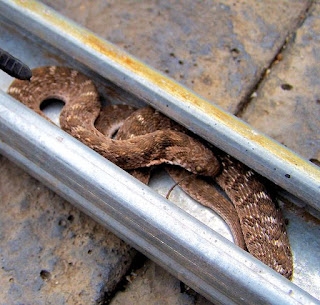Berg Adder or "Bitis atropos" is usually a venomous viper species that's found only in three mountainous regions in southern Africa. A small species that is certainly unusual in that its venom has a major neurotoxin. But no subspecies are currently recognized.
The average adult height and width of Berg Adder is 30–40 cm, by females reaching a maximum 50 cm inside wild and 60 cm in captivity.
Berg Adder Its venom isn't powerful enough to kill a human, and both activates and dissipates quickly. Symptoms presented are similar to alcohol intoxication and so are not permanent. And unfortunately this snake dies if it's milked to its venom.
Berg Adder



The venom of berg adder snake is neurotoxic (nerve-destroying), which is unusual for the adder species of southern Africa. It causes paralysis of cranial nerves III, IV and VI. The bite area and affected limb will show some swelling. Within an hour of being bitten vision will be impaired and the eyelids will droop. These early symptoms can cause confusion with the bite of a Rinkals, except that breathing difficulties never occur. The senses of taste and smell are usually lost. After 24 hours paralysis of the eye, tongue and mouth muscles occurs and usually persists for 3 to 4 days. Normal vision is usually recovered by the sixth day, but visual abnormality may persist until the fifteenth day.



The Berg Adder is answerable to probably the most bites amongst hikers and climbers, as it is inside practice of sunning itself on small rock ledges as well as paths. Lots of the recorded bites are to the hands and fingers, inflicted as hikers and climbers have experimented with clamber up steep slopes using ledges as hand-holds. This can be a very irritable snake and is particularly easily provoked into biting, though it likes to escape from danger while building a loud hissing noise. Smaller specimens hiss with such considerable vigour that their body vibrates, and yes it seems like these are squeaking.
Berg Adder Occupies a number of different habitats, but prefers relatively cool environments with high levels of precipitation. In Zimbabwe they are not found below 1500 m. Usually associated with mountain slopes and rocky hillsides, but also montane grassland with patches of bushes and shrubs.